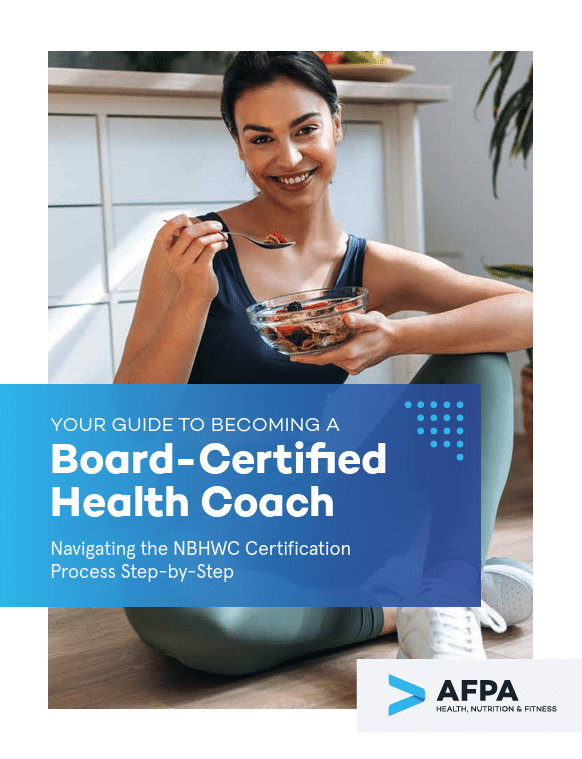“You didn’t follow the exercise plan—why?” vs. “How have you been adjusting to the new workout program?”
Both questions may ultimately reveal the barriers and challenges your client faces in sticking to a workout routine. But how they end up feeling could vastly differ:
- The first question is reminiscent of an interrogation. Your client feels judged and guilty.
- The second question signals your willingness to understand their experience from their perspective. Your client feels they can explain their circumstances freely without any judgment. And they feel supported.
Your communication skills as a fitness professional (e.g., personal trainer, Pilates instructor, or yoga instructor) could impact your client’s motivation to meet their physical and mental fitness goals. So, how can you communicate in a manner that best empowers, motivates, and supports your client? Find out in this article.
What Is Communication?
Communication is the act of expressing ideas, information, knowledge, thoughts, and feelings, coupled with understanding what is expressed by others.
It can take four forms:
- Verbal communication: The spoken word; an oral form of communication
- Nonverbal communication: Involves actions, facial expressions, body position, tone, pitch, and gestures
- Written communication: Includes letters, emails, and text messages
- Visual communication: The use of visual elements, like signs and typography, to convey ideas and information
Note: Of these four communication forms, the first three are the most immediately relevant to a coach-client relationship. This article thus primarily focuses on verbal, nonverbal, and written communication techniques.
Nonverbal Communication
Your client can infer a lot from your nonverbal communication cues (e.g., whether you genuinely care, if you’re being truthful, and how well you’re listening). Research suggests that between 60% to 90% of communication is nonverbal.
The Roles of Nonverbal Communication
Nonverbal communication could play multiple roles, including:
- Repetition: Repeats and strengthens the message you’re making verbally. It helps increase trust, clarity, and rapport. An example is if you say, “I’m happy to support you,” and follow it with a genuine smile.
- Contradiction: Contradicts the message you’re trying to convey, thus indicating to your client that you may not be telling the truth. It could generate tension, mistrust, and confusion. An example is if you say, “I’m interested in learning what you think about the new workout plan,” while fiddling with your phone.
- Substitution: Substitutes a verbal message. For example, your client tells you they worked out once last week, and you frown. Although you’re not saying anything, you still express disapproval, unhappiness, and disappointment.
- Complementing: Adds or complements your verbal message. For example, imagine that a client has pushed through a tough training session. If you pat them on the back in addition to giving praise, that may increase the impact of your message.
Pay Attention to Your Nonverbal Communication
This, in turn, highlights why it’s crucial for you to develop an awareness of your nonverbal communication. It prevents you from undermining your verbal communication when interacting with your client.
Here are a few specific things to be mindful of:
- Body movements: Body movements can convey intent, emotion, and meaning. For example, nodding your head as your client speaks could show understanding and support. That said, too many body movements can be distracting. It may also come across as patronizing, so be careful not to overdo it.
- Posture: How you stand or sit determines whether your posture is open or closed. Try to maintain an open posture when speaking with your client to portray friendliness and positivity. Face your client directly with your arms at your sides and your chest, abdomen, and lower extremities easily seen.
- Eye contact: Where and how often you make eye contact can affect your client’s level of trust in you. Try to keep eye contact as much as possible when speaking with your client.
- Paralanguage: Includes your voice’s pitch, tone, and loudness. It also includes your speed of talking. When speaking, think about how you could communicate your words in a supportive, nonjudgmental way.
- Closeness or personal space: How close you stand or sit to your client determines the level of intimacy. Standing or sitting too close can be intimidating and off-putting, depending on your relationship with a client.
- Facial expressions: Be mindful of how you use your facial expressions, such as smiling or frowning, when interacting with your client.
A Note on Cultural Differences
It’s also worth remembering that there may be cultural differences in nonverbal communication.
For instance, the total amount of eye contact and the length that an individual maintains eye contact tends to vary across cultures. According to this study, individuals from an East Asian culture perceive another’s face as angrier and more unapproachable when making eye contact than individuals from Western European cultures.
Thus, developing cultural compatibility as a fitness professional could help create an inclusive and supportive environment for all clients.

Get Your Free Guide
Learn How to Start a Fulfilling, Impactful Career as a Holistic Health Coach
You’ll learn:
- Why holistic health matters
- If holistic health coaching is right for you
- What career opportunities exist for health coaches
- And more!
Practice Active Listening
How can you help your client feel heard and understood? A useful communication technique to use is active listening; here’s how you could implement it:
- Be fully present: Give your client your undivided attention. Avoid being distracted by other things (e.g., background noise or your mobile phone notifications). Pay careful attention to your client’s nonverbal cues—from their body language to the tone of their speech—to pick up the hidden meaning.
- No judgment: Active listening is an act of empathy. You’re trying to understand where they’re coming from and their emotions. You’re unlikely to achieve that if you judge your client as they talk.
- Show that you’re listening: It’s crucial that your client “sees” you’re listening, too (circa the importance of nonverbal communication). Use your body language and gestures to show that you’re paying attention. Combine eye contact with smiles to encourage your client where appropriate. Keep your posture open and interested.
- Reflect back: When your client is done saying their piece, paraphrase what they said. This shows them that you’ve been listening and, more importantly, that you understand them. Reflective listening validates your client’s feelings by showing that you get it. Here’s an example of how you could incorporate this technique:
o Client: “I’ve been feeling really stressed about work, and then when I get home, I’m in such a bad mood I don’t feel like working out.”
o You: “Work has been so stressful that it causes you to feel frustrated all the time. And when you’re in that state of mind, exercising isn’t something you want to do.”
- Ask your client to elaborate: Maybe you didn’t quite understand what your client said. In this case, you could use open-ended questions such as, “Could you tell me more about that?” or “I didn’t understand what you just said. Could you help me understand by explaining that further?”
Use Inclusive Language
Inclusive language refers to the words and phrases you use that avoid biases, slang, and expressions that discriminate against groups of individuals based on race, gender, socioeconomic status, and ability.
It’s one of the key communication techniques you could use to create a safe, empowering, and supportive environment for all clients in their pursuit of a healthier lifestyle.
Here are a few tips that may help you adjust your language to be more inclusive of all people:
- Ask your client’s pronouns: When you use your client’s correct pronouns, it creates an inclusive environment where you demonstrate that you care for and respect them. If you aren’t sure how to get your client to share their pronouns, one way is to share your own. For example, you could say, “Hello, my name is Lauren, and I go by ‘they/them/theirs’ pronouns. What pronouns do you use?”
- Use gender-neutral labels when talking about family members: Intentionally using gender-neutral titles (e.g., parent, spouse, partner, child) when speaking about your or your client’s family could make a big difference in how comfortable they feel during the interaction.
- Use plain language (avoid jargon): “Hypertrophy,” “ankle dorsiflexion,” “scapula”—while you may be familiar with these terms as a fitness professional, the same may not necessarily apply to your client. Choose simple, straightforward language whenever possible. So, here, do replace “hypertrophy” with “muscle growth,” “ankle dorsiflexion” with “tilt your foot upwards,” and “scapula” with “shoulder blades.” Also, use only as many words as necessary.
- Be mindful of terms related to race, ethnicity, nationality, and culture: Certain regularly used terms have roots in racism and discrimination or are taken from celebrations and sacred practices of marginalized communities. You may wish to spend some time educating yourself on what those are and the appropriate alternatives.
Of course, the above is by no means an exhaustive list of inclusive language. If you’re interested in learning more, refer to A Progressive’s Style Guide, a resource created by SumOfUs, a 501(c)4 social welfare nonprofit organization.
Adopt a Trauma-Informed Approach
According to the American Psychological Association, “trauma” is an emotional response to a terrible event, like an accident, rape, or natural disaster. Going beyond these “big-T trauma” events (as defined by psychologists), the Trauma-Informed Care Implementation Resource Center also lists other experiences that may be traumatic, like:
- Emotional abuse
- Childhood neglect
- Living with a family member with mental health or substance use disorders
- Sudden, unexplained separation from a loved one
- Poverty
- Racism, discrimination, and oppression
- Violence in the community, war, or terrorism
Broadly speaking, though, trauma is anything that overwhelms an individual’s existing resources and ability to cope.
Trauma could have adverse and long-lasting effects on a client’s physical, emotional, and spiritual wellbeing. This may affect their nutrition and exercise behaviors, self-care choices, and ability to regulate their emotions, making it difficult for them to experience meaningful progress in their health and fitness.
Let’s say you politely and respectfully suggest your client try adding cardio to their workout routines. They, in turn, get super angry.
While you may see it as an overreaction, this could be a perfectly normal response for an individual who’s been fat-shamed all their lives and told to do cardio because “it’ll help.” Yet, they haven’t found any success with it.
This highlights the importance of adopting a trauma-informed approach as a fitness professional. More specifically, being a trauma-aware coach could help you:
- Understand clients and their challenges, leading to more effective, productive coaching relationships
- Avoid re-traumatizing clients
- Recognize when a client needs additional support (e.g., a referral to a therapist) to work through trauma
Key Principles of a Trauma-Informed Approach
The six key principles of a trauma-informed approach are:
- Safety: Help your client feel physically and psychologically safe in the coaching environment.
- Trustworthiness and transparency: Be clear about how you make decisions and what you will do with the information collected. This builds and maintains trust with clients.
- Peer support: Provide or suggest opportunities for clients to seek peer support and mutual self-help.
- Collaboration and mutuality: Recognize power differences in the coach-client relationship society has set forth and work to level them.
- Empowerment, Voice, and Choice: Recognize and build upon your client’s unique strengths and experiences. Foster empowerment and self-advocacy skills of your clients. Allow your client to determine the plan of action they need through shared decision-making and goal-setting.
- Cultural, Historical, and Gender Issues: Recognize and actively move past stereotypes and biases. Incorporate policies, protocols, and processes responsive to your client’s needs.
Takeaway
If you’re looking to improve your communication techniques, start by understanding what communication entails. It’s so much more than careful word selection—it’s also about how you deliver your message, how you listen to your client, etc.
Ultimately, always try to create a safe space for your clients to share openly and comfortably. That’s where appropriate nonverbal cues, inclusive language, active listening, and a trauma-informed approach come into play.

Grow Your Income and Impact as a Personal Trainer and Board-Certified Health Coach
References
- https://www.ncbi.nlm.nih.gov/pmc/articles/PMC7298765/
- https://www.tandfonline.com/doi/full/10.1080/13506285.2021.1928354
- https://www.ncbi.nlm.nih.gov/pmc/articles/PMC3596353/
- https://www.ncbi.nlm.nih.gov/pmc/articles/PMC2793758/
- https://f.hubspotusercontent10.net/hubfs/349216/Sum-Of-Us-Progressive-Style-Guide.pdf
- https://www.apa.org/topics/trauma
- https://www.traumainformedcare.chcs.org/about-the-trauma-informed-care-implementation-resource-center/
- https://www.cdc.gov/cpr/infographics/6_principles_trauma_info.htm



